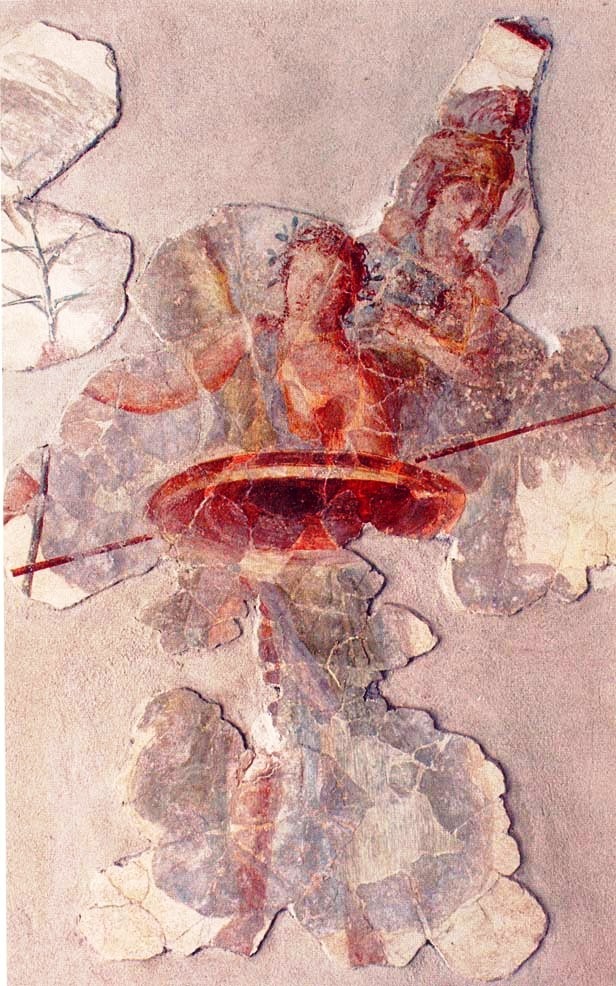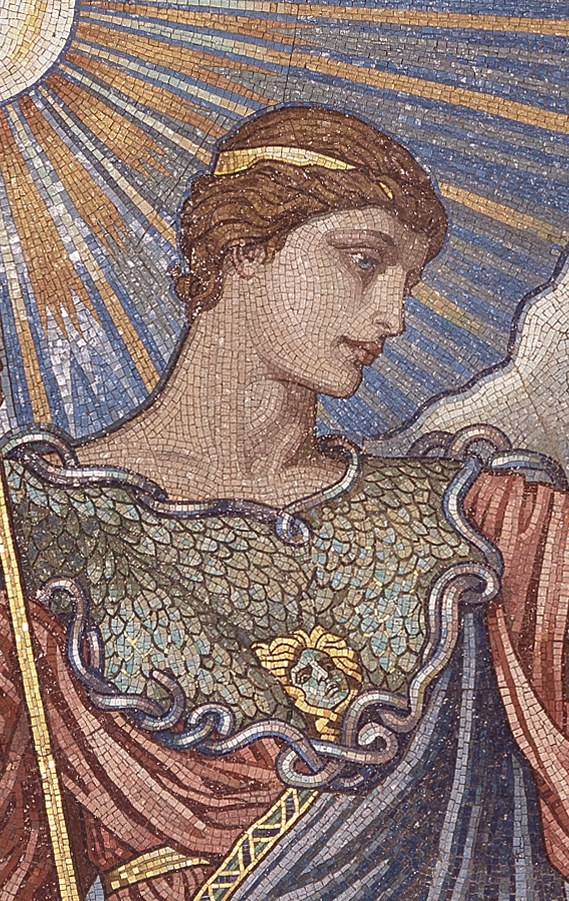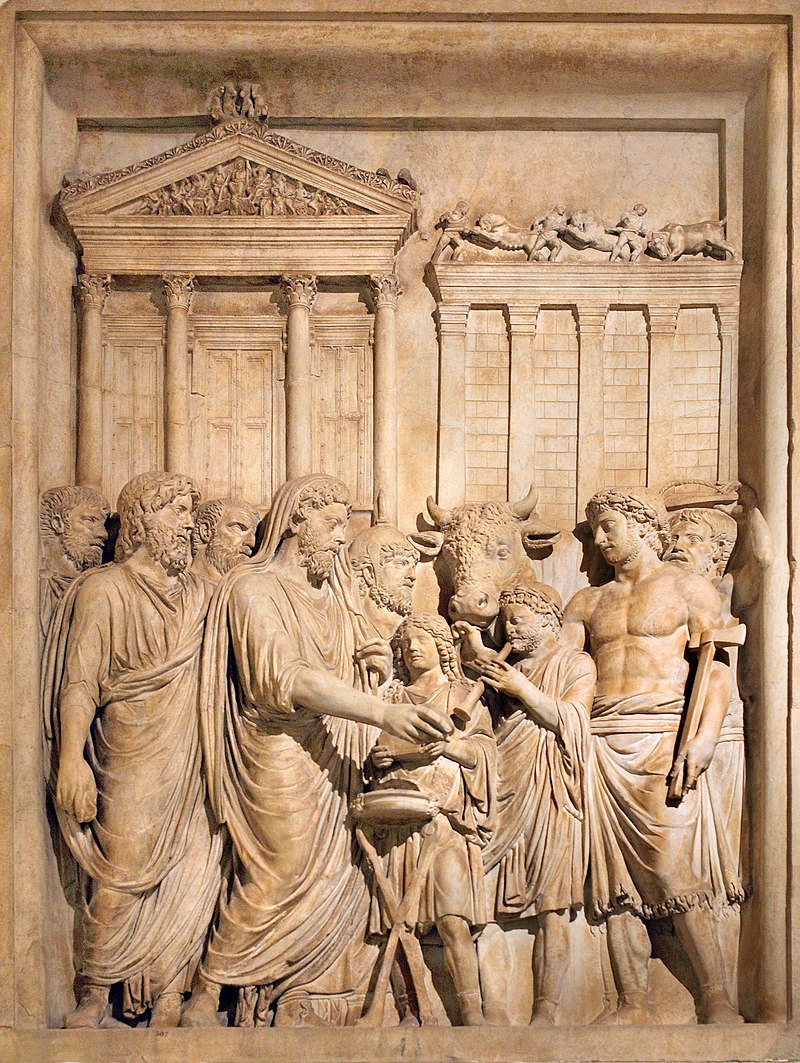Minerva in Roman mythology is a goddess of wisdom and strategic warfare. Law, justice, victory, and the sponsor of trade, arts, and strategy. Unlike Mars, who is a supporter of violence, Minerva is only about defensive war.
The Romans from the second century onwards associated Minerva with the Greek goddess Athena. Since she is considered an important Roman goddess, she is highly honored, revered, and respected. Therefore, let us see what makes Minerva stand out from other gods and goddesses in mythology.
Origin
The Minerva mythology relates to the Greek myths surrounding Athena. It is said she was born of Metis who was swallowed by Jupiter and originated from her father’s head fully armed and clad in armor.
Jupiter had raped Titaness Metis, which caused her to change her shape to escape from him. Jupiter then recalled the prophecy that his own child will overthrow him as he had Saturn and Saturn had Caelus.
Furthermore, Jupiter according to Minerva roman mythology feared that their child would be male and take his place to rule the heavens once he grows up, tricked Metis into turning into a fly and swallowing her.
While in Jupiter’s body, the Titaness gave birth to Minerva and forged weapons and armor for her child. In other versions of the Minerva roman myth, Metis continued to live inside the mind of Jupiter, resulting in his wisdom.
Meanwhile, the constant ringing and pounding led to Jupiter experiencing agonizing pain. To help relieve the pain, Vulcan used a hammer to split open Jupiter’s head and Minerva emerged from the cleft, fully grown and armed with armor. You can also read the profile of Roman Emperor Nero here.
Minerva and Arachne
Arachne was known to be a personality who specialized in embroidery and weaving. Her work was so beautiful that Roman mythology states that even the nymphs would come out of their natural environments to watch her work.
One day, Arachne boasted that she could beat the skills of Minerva and pay the price for it if proven otherwise. This angered Minerva who changed her appearance to an old woman and approached Arachne offering her to take her challenge back and ask for forgiveness.
When Arachne refused, Minerva returned to her original appearance and took up the challenge. As a result, Arachne began weaving a tapestry featuring the shortcomings of the gods, while Minerva highlighted her competition with Neptune along with the gods and mortals looking down with disgust on those who dared challenge them.
Minvera’s weaving was meant to be her final warning to Arachne to back down. However, Minerva was insulted by the scenes woven by Arachne and destroyed them.
Minerva then touched the forehead of Arachne and made her feel shame, which led to Arachne hanging herself. Minerva felt bad for the woman and brought her back to life. However, Minerva turned her into a giant spider as punishment forever while warning others not to challenge the gods.
Minerva and Medusa
Medusa was once a beautiful woman and priestess of Minerva. Later on, Minerva found Medusa and Neptune kissing each other in the temple dedicated to Minerva herself. As a result, Minerva turned Medusa into a monster with hissing snakes as hair and removed her charm.
Anything that would look upto Medusa at the time, would turn into a stone. When Perseus approached Medusa, he used his shield to reflect her appearance and avoid eye contact, and then beheaded her.
Taming of Pegasus
When Perseus beheaded Medusa, some blood spilled on the floor, and from it originated Pegasus. Minerva caught the horse and tamed it before gifting it to Muses. The fountain of Hippocrene was a result of the kick of Pegasus’s hoof.
When Bellerophon fought with Chimera, he sought Pegasus in the fight. Since Bellerophon sought the horse’s help, he had to sleep in Minerva’s temple who came to him with a golden bridle. Upon the horse witnessing Bellerophon with the bridle, it immediately allowed him to mount and they went on to defeat Chimera.
Worship in Rome and Italy
In Rome, Minerva was worshipped at many locations. For instance, she was worshipped at the Temple of Minerva Medica and the “Delubrum Minerva”, a temple founded by Pompey around 50 BC. The Romans used to celebrate Minerva’s festival from March 19 to March 23.
The festival held deep importance to the Romans as Minerva was the goddess of arts and crafts. The first day was supposed to honor the anniversary of Minerva, therefore, no blood was shed.
However, the remaining four days included “drawn swords” to honor Minerva’s military association. Since Minerva was worshipped at different locations in Rome, she was credited for inventing several things such as the Flute. Therefore, different worshipping locations worshipped and credited Minerva for different things.
In Italy, Minerva became associated with the Greek goddess Athena but unlike Mars, the god of war, Minerva was sometimes portrayed with a lowered sword to show respect and sympathy for the dead, instead of raising the sword in triumph and battle lust.
Adding to Minerva myth, Minerva was often associated with Greek goddess Athena to the point where she became a battle goddess. This was in Italy where Minerva was worshipped throughout.
Final Word
Minerva’s appearance and presence in Roman mythology continue to be relevant and strongly felt. Even though it is lesser followed in Italy today but those who believe and follow these myths have kept them alive. There was a time when these characters were mere theories but the discovery of certain artifacts over the years had resulted in followers associating them with the gods and goddesses. Therefore, if not anything else, these mythologies are here to stay. Also, click the link to find out the 10 worst and craziest Roman Emperors of all time.




